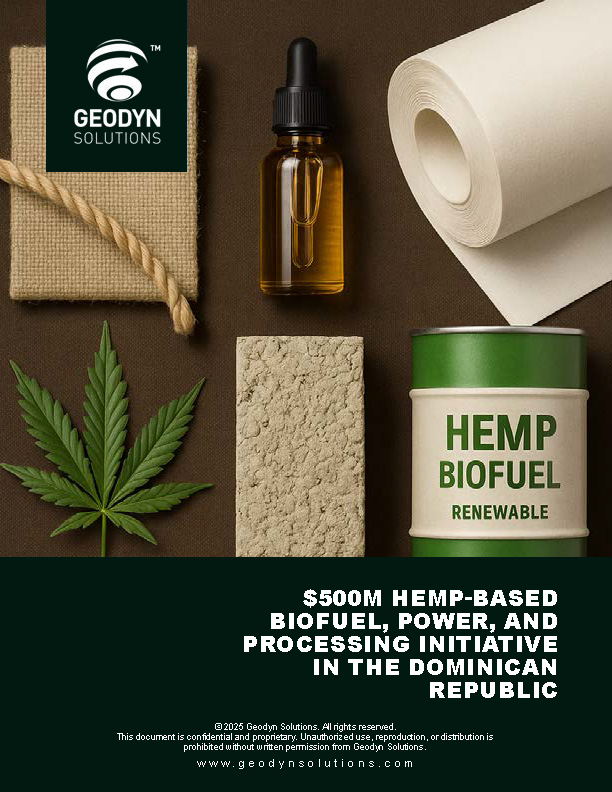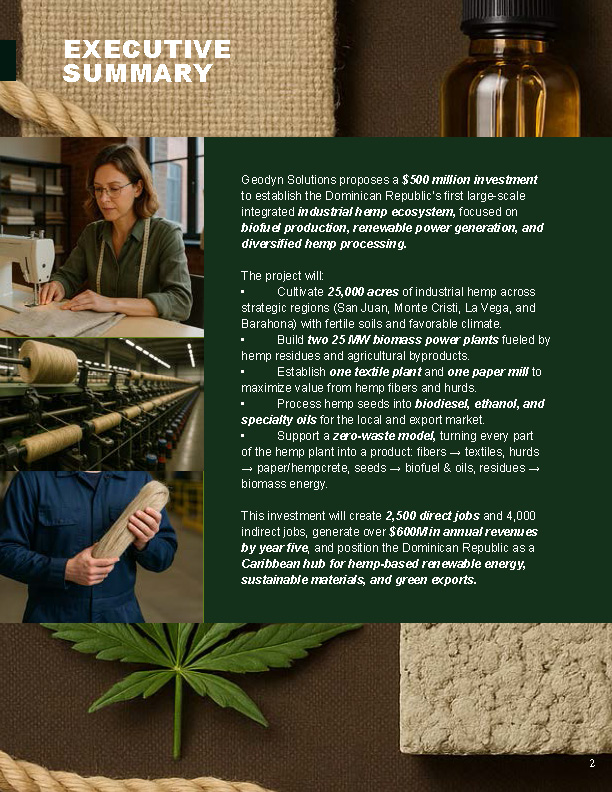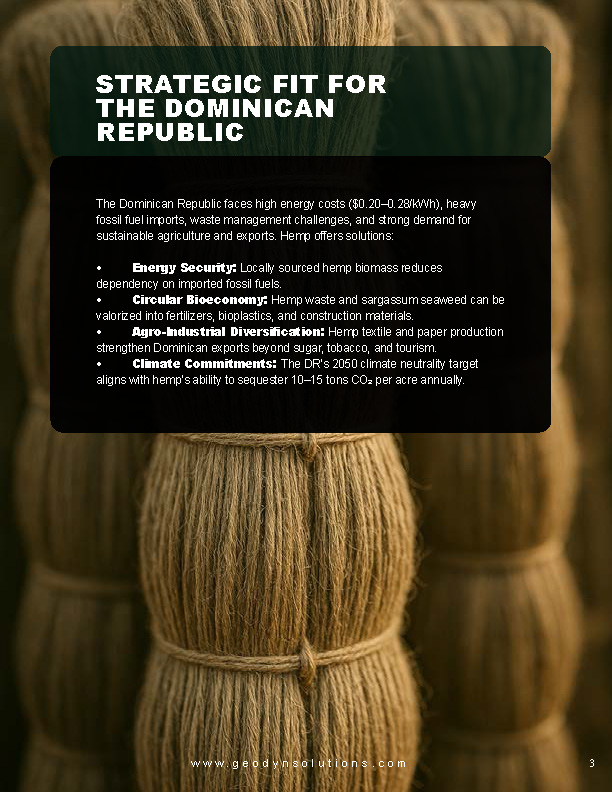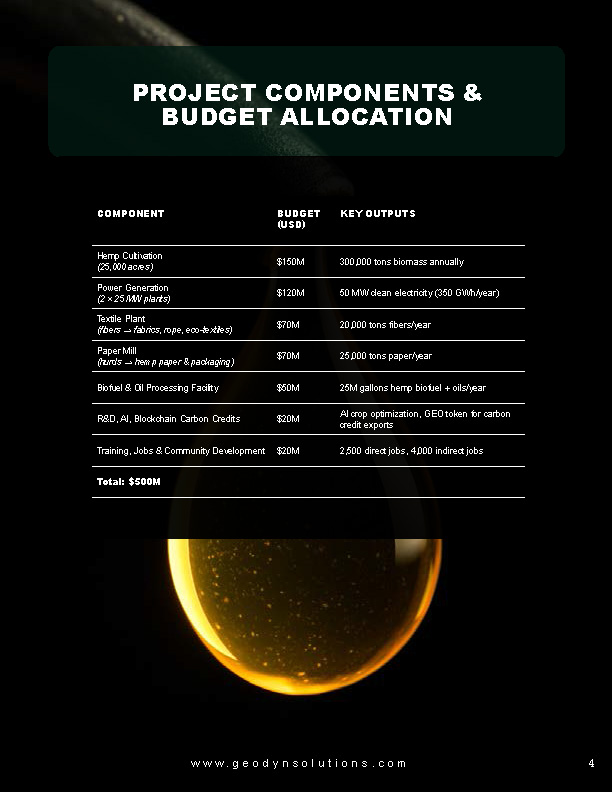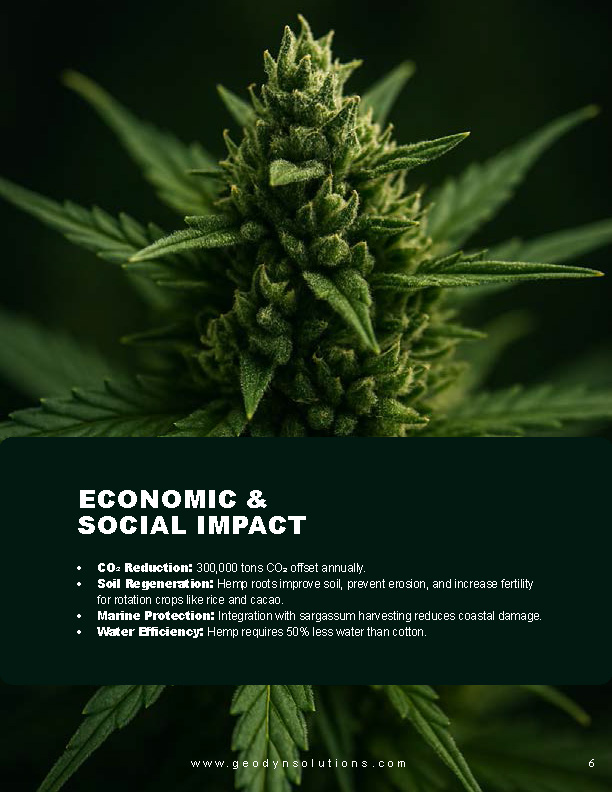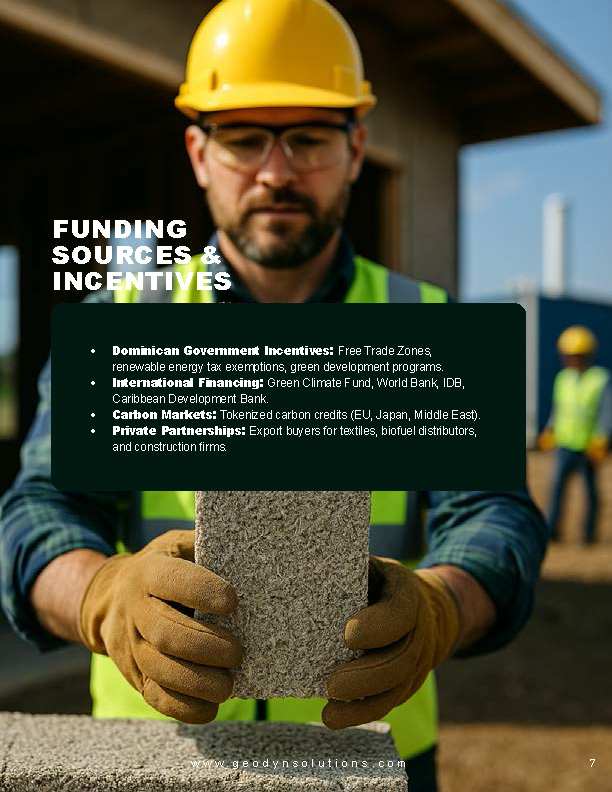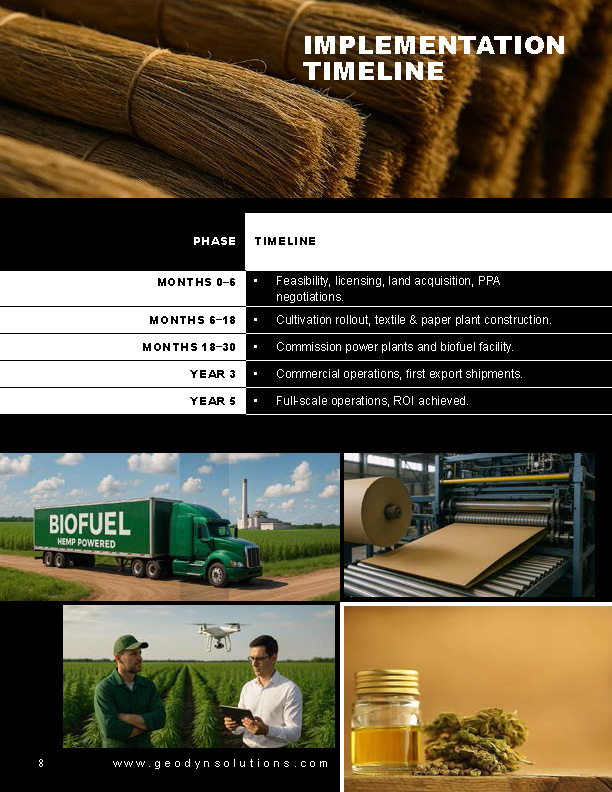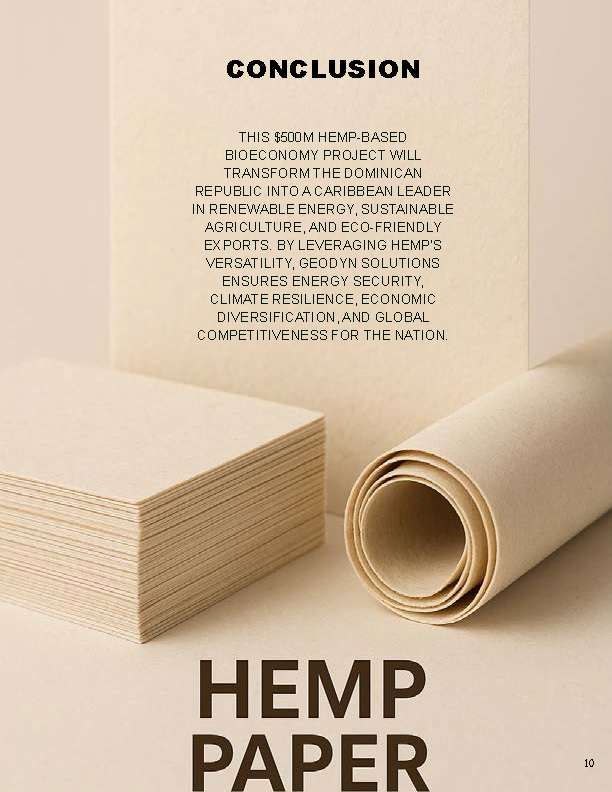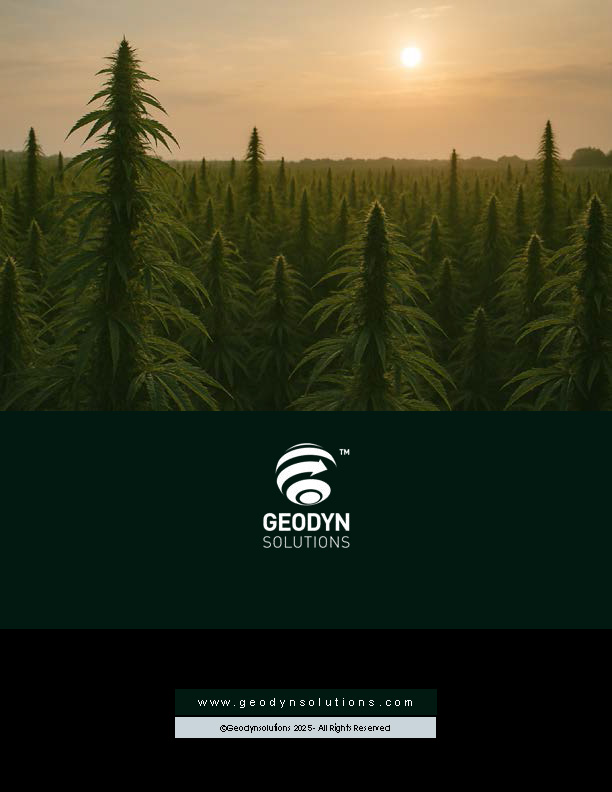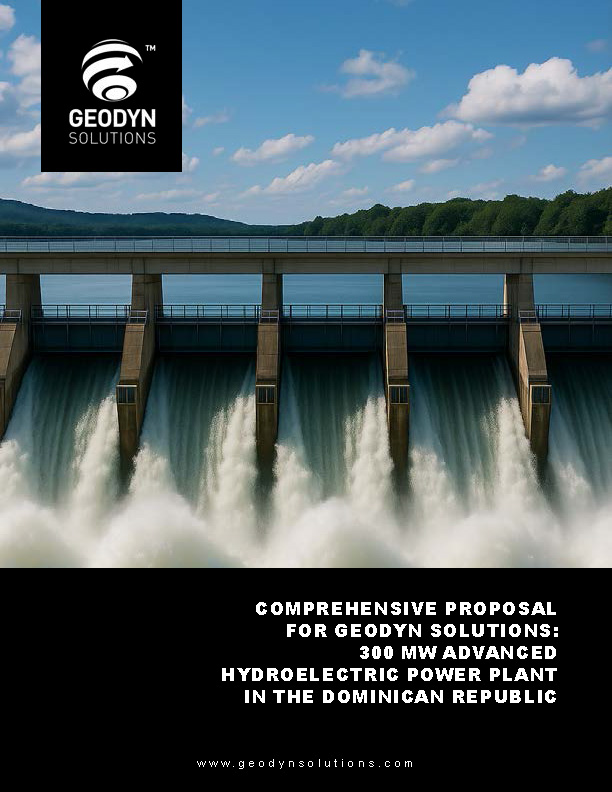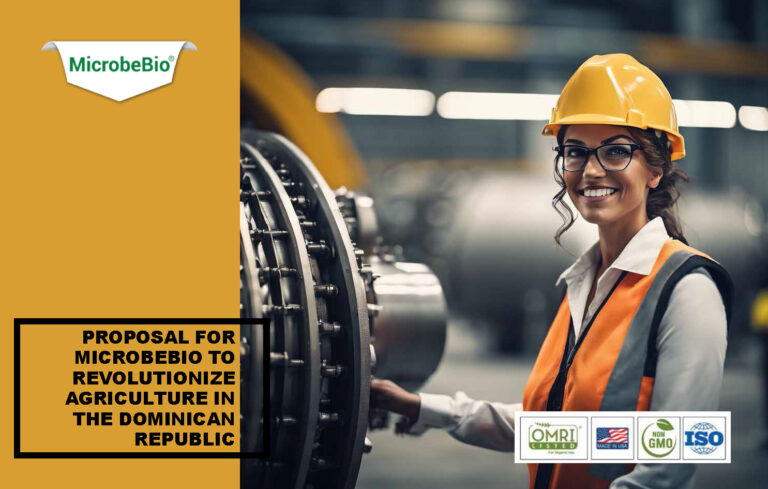Geodyn Solutions – $500M Hemp-Based Biofuel, Power, and Processing Initiative in the Dominican Republic
- Executive Summary
Geodyn Solutions proposes a $500 million investment to establish the Dominican Republic’s first large-scale integrated industrial hemp ecosystem, focused on biofuel production, renewable power generation, and diversified hemp processing.
The project will:
- Cultivate 25,000 acresof industrial hemp across strategic regions (San Juan, Monte Cristi, La Vega, and Barahona) with fertile soils and favorable climate.
- Build two 25 MW biomass power plantsfueled by hemp residues and agricultural byproducts.
- Establish one textile plantand one paper mill to maximize value from hemp fibers and hurds.
- Process hemp seeds into biodiesel, ethanol, and specialty oilsfor the local and export market.
- Support a zero-waste model, turning every part of the hemp plant into a product: fibers → textiles, hurds → paper/hempcrete, seeds → biofuel & oils, residues → biomass energy.
This investment will create 2,500 direct jobs and 4,000 indirect jobs, generate over $600M in annual revenues by year five, and position the Dominican Republic as a Caribbean hub for hemp-based renewable energy, sustainable materials, and green exports.
- Strategic Fit for the Dominican Republic
The Dominican Republic faces high energy costs ($0.20–0.28/kWh), heavy fossil fuel imports, waste management challenges, and strong demand for sustainable agriculture and exports. Hemp offers solutions:
- Energy Security: Locally sourced hemp biomass reduces dependency on imported fossil fuels.
- Circular Bioeconomy: Hemp waste and sargassum seaweed can be valorized into fertilizers, bioplastics, and construction materials.
- Agro-Industrial Diversification: Hemp textile and paper production strengthen Dominican exports beyond sugar, tobacco, and tourism.
- Climate Commitments: The DR’s 2050 climate neutrality target aligns with hemp’s ability to sequester 10–15 tons CO₂ per acre annually.
- Project Components & Budget Allocation
Component | Budget (USD) | Key Outputs |
Hemp Cultivation (25,000 acres) | $150M | 300,000 tons biomass annually |
Power Generation (2 × 25 MW plants) | $120M | 50 MW clean electricity (350 GWh/year) |
Textile Plant (fibers → fabrics, rope, eco-textiles) | $70M | 20,000 tons fibers/year |
Paper Mill (hurds → hemp paper & packaging) | $70M | 25,000 tons paper/year |
Biofuel & Oil Processing Facility | $50M | 25M gallons hemp biofuel + oils/year |
R&D, AI, Blockchain Carbon Credits | $20M | AI crop optimization, GEO token for carbon credit exports |
Training, Jobs & Community Development | $20M | 2,500 direct jobs, 4,000 indirect jobs |
Total: $500M
- Financial Projections
Revenues (Year 5 steady state):
- Hemp Biofuel & Oils: $150M
- Electricity Sales (PPA): $100M
- Hemp Textiles: $200M
- Hemp Paper & Packaging: $120M
- Carbon Credits & Byproducts: $30M
Total Revenues:~$600M/year
ROI & Payback:
- ROI: 20–25% over 10 years
- Payback: 5 years
- Break-even: Year 3
- Economic & Social Impact
- Job Creation:6,500 total (direct + indirect) across farming, processing, logistics.
- Export Growth:Hemp textiles and paper as eco-luxury exports to the U.S. & EU.
- Local Industry:Hempcrete for affordable housing and sustainable construction.
- Food & Agriculture:Hemp seed oil for food, cosmetics, and nutraceuticals.
- Environmental Benefits
- CO₂ Reduction:300,000 tons CO₂ offset annually.
- Soil Regeneration:Hemp roots improve soil, prevent erosion, and increase fertility for rotation crops like rice and cacao.
- Marine Protection:Integration with sargassum harvesting reduces coastal damage.
- Water Efficiency:Hemp requires 50% less water than cotton.
- Funding Sources & Incentives
- Dominican Government Incentives:Free Trade Zones, renewable energy tax exemptions, green development programs.
- International Financing:Green Climate Fund, World Bank, IDB, Caribbean Development Bank.
- Carbon Markets:Tokenized carbon credits (EU, Japan, Middle East).
- Private Partnerships:Export buyers for textiles, biofuel distributors, and construction firms.
- Implementation Timeline
- Months 0–6:Feasibility, licensing, land acquisition, PPA negotiations.
- Months 6–18:Cultivation rollout, textile & paper plant construction.
- Months 18–30:Commission power plants and biofuel facility.
- Year 3:Commercial operations, first export shipments.
- Year 5:Full-scale operations, ROI achieved.
- Conclusion
This $500M Hemp-Based Bioeconomy Project will transform the Dominican Republic into a Caribbean leader in renewable energy, sustainable agriculture, and eco-friendly exports. By leveraging hemp’s versatility, Geodyn Solutions ensures energy security, climate resilience, economic diversification, and global competitiveness for the nation.
